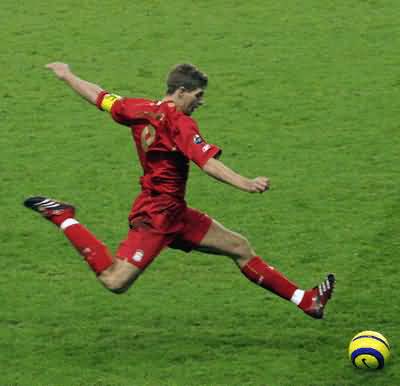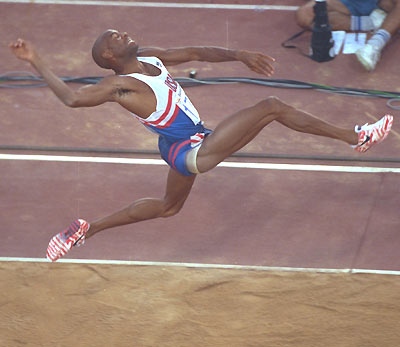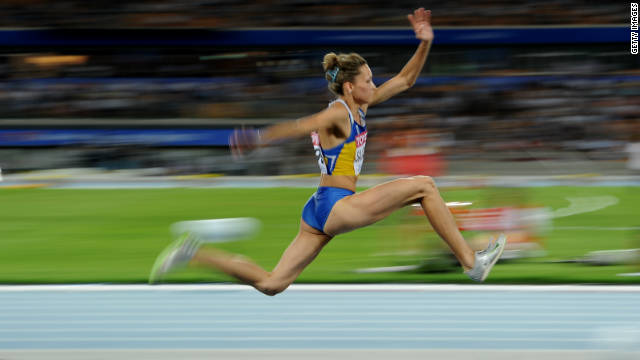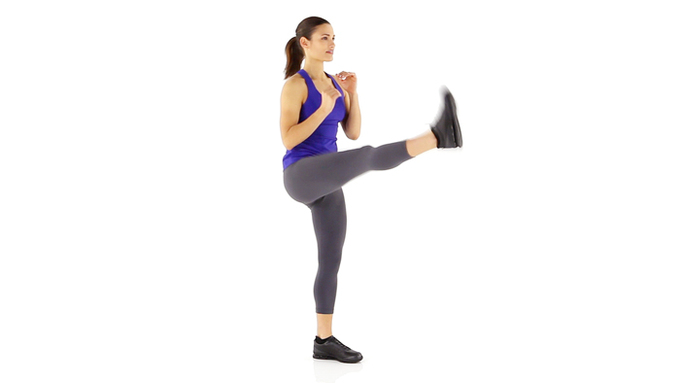Know Your Hurdler’s Background
In all but a few exceptional cases, athletes who become hurdlers begin their athletic careers participating in other sports, and/or in other track and field events, prior to turning to the hurdles. In age group track, hurdling isn’t even offered as a competitive event until the age of eleven, whereas little boys and girls fresh out of their diapers are allowed to race in the sprinting events and take part in selected field events.
For this reason, I’ve come to realize that, for a hurdle coach, knowing a hurdler’s athletic background can be vital to coaching that athlete in a manner that is most efficient and effective, and with the least amount of frustration for coach and athlete alike. A lot of times, the way a hurdler runs over the hurdles, his or her strengths and weaknesses, and some of the flaws he or she displays, are rooted in his or her previous (or simultaneous) participation in other sports or other events.
[am4show not_have=”g5;”]
[/am4show][am4guest]
[/am4guest][am4show have=”g5;”]
Let’s take a look at some examples:
Football Players
Strengths:
- Fearless mentality
- Aggressive approach
- Good speed, turnover
- High level of explosive power
Weaknesses:
- Arms swing side to side
- Elbows lock
- A lot of lateral movement in the lane
- Lack of flexibility
- Hit a lot of hurdles
Summary:
These are the David Oliver types, the Roger Kingdom types. Football players don’t have to be taught to be aggressive, to attack the hurdles, because they play a sport where attacking and being aggressive are paramount to success. The mindset required to be a successful football player is the same mindset necessary to be a successful hurdler, which is why so many football players gravitate to the hurdles when they run track, and which is also why there is such a long list of names of NFL players and former NFL players who are/were also outstanding hurdlers.
On the flip side of that, because they’re so aggressive, and because they tend to rely on their power and speed, hurdlers with a football background tend to hit a lot of hurdles and de-emphasize technique. The logic is, If I can just power through them, why bother learning to do it the right way? So football players have to be convinced that improving their technique will improve their time and allow them to use their speed and power even more.
Because football is a sport of short, fast bursts, and because football players are often weight room junkies who don’t complement the lifting with appropriate stretching, they often lack flexibility, making them prone to hamstring tears and the like. And because most of those short, fast bursts require lateral movement, football players often swing their arms across their body and zigzag in the lane. Such habits have to be un-taught through constant drilling.

In modern times, Robert Griffin III is probably the most well-known football player to have had success in the hurdles.
Soccer Players
Strengths:
- High level of endurance
- Strong core muscles
Weaknesses:
- Arms cross the body
- A lot of back-kick
Summary:
Soccer players often make for good 300/400m hurdlers because they don’t get tired. Soccer is a sport that requires more running – in terms of total volume – than any other sport than I can think of other than distance running. But unlike distance runners, much of the running of soccer players is at or close to full speed. So soccer players have built-in speed-endurance. In most cases, however, they usually lack the turnover and raw speed that makes for an excellent 100/110m hurdler.
Like football players, soccer players often have to make quick, sudden shifts of direction. So soccer players usually have very strong core muscles (glutes, lower back, groin, hip flexors, lower abdominals), which means they’ll have no problem in the hurdles when it comes to putting their body into the necessary positions to execute the hurdling motion. I often have hurdlers with a soccer background start out in the long hurdles and then grow into doing both, as speed can be developed.
A common problem I’ve seen with soccer players is that they have a lot of back-kick in their running stride. I think that’s just because athletes in other sports are not often taught proper running mechanics (although that trend is changing). And soccer players do so much running that they ingrain bad mechanics. So with soccer players, a lot of time has to be spent teaching them front-side mechanics, keeping the ankle dorsi-flexed, etc., because such concepts are usually foreign to them.

This photo makes it clear why soccer players often have a lot of back-kick and don’t run on the balls of their feet.
Gymnasts, Cheerleaders
Strengths:
- Very explosive
- Fearless mentality
Weaknesses:
- Elevate the hips
- Straight leg lead
- Too much air time
Summary:
When it comes to female hurdlers, I would say that gymnastics and cheerleaders are the most common backgrounds I’ve seen. I’ve gotten to the point where I seek out girls with gymnastics/cheerleading backgrounds when recruiting potential hurdlers. Like football players on the male side, gymnasts and cheerleaders already have that fearlessness that the hurdle require. They also have above-average explosive power.
The difficulty with gymnasts and cheerleaders lies in taming their explosive power. They tend to take off with so much force that they catapult themselves into the air. They clear hurdles too high and spend too much time in the air. Such habits have to be drilled out of them without compromising their aggression.

Such flexibility is why cheerleaders make such good hurdlers. This jump is actually called the “front hurdler.”
Long Jumpers
Strengths:
- Good speed
- Cover ground
Weaknesses:
- Hips elevate
- Last-step stomp
- Too much air time
- Wild arms
Summary:
Long jumpers are similar to gymnasts and cheerleaders. Too much elevation. I’ve seen long jumpers do a drill where a hurdle is placed just in front of the pit, and they have to jump over the hurdle to get into the pit. The purpose of the drill is to teach them to elevate, to get their hips up. So of course, when long jumpers see a hurdle, they think elevate, they think raise the hips. One of my girls who does both events was doing this drill once and I overheard the long jump coach instruct her, “Don’t hurdle it!” I was like, “Hey, how you gonna tell a hurdler not to hurdle a hurdle?”
The wild arms is a real problem too. Long jumpers use that cycling of the arms thing they do in order to get more elevation and distance. So when you see a hurdler with crazy arms like that, you know they must have some background in the jumps. Like all other habits ingrained from other events, that must be filtered out through much drilling.

This photo of legendary long jumper Mike Powell shows the incredible athleticism of these athletes, but also shows why they sail and their arms flail when they run the hurdles.
Triple Jumpers
Strengths:
- Good speed
- Cover ground
Weaknesses:
- Land on the same leg
- Arms flail
Summary:
I’d thought I’d seen it all until I saw a 12-year-old kid that I just started coaching this past November clear a hurdle and land on the same leg he took off with. I didn’t even realize what had just happened; I just knew it looked weird. Then his dad said, “Boy, stop triple-jumpin’ them hurdles.” Only then did it hit me that he had hurdled in the same manner as the “hop” phase of triple jump.
I was amazed that he had the leg strength to get over a 33” hurdle landing on the same leg. I knew that if I could teach him proper hurdling mechanics, then the leg strength he had gained from jumping would come in handy. That has proven to be the case.
Triple jumpers also have the same arms-flailing problem that long jumpers do – even more so, actually – so getting them to keep their elbows in takes persistent drilling.

Similar to long jumpers, triple jumpers are very explosive and very dependent on exaggerated arm action that must be tamed when they hurdle.
Martial Artists
Strengths:
- Excellent balance
- Exceptional explosive power
- Precise movements
- Exceptional strength and flexibility
Weaknesses:
- Straight leg lead
Summary:
The best 110 hurdler I’ve ever coached, Wayne Davis II, had an extensive background in the martial arts, so I saw first-hand the benefits of such training. While many hurdlers have issues with tilting to one side or the other, leaning to one side or the other, Wayne, from the very beginning, ran over the hurdles in a straight line, with no lateral movement in the lane. While other disciplines may lead to increased muscle flexibility or increased muscle strength, martial arts training leads to both. Wayne, for example, always had a remarkable ability to put his body into hurdling position, even though he was always small in comparison to the other hurdlers.
The only problem with the martial arts is that they lead to the habit of a straight-leg lead or an aggressive kick of the lead leg. To use Wayne as the model, his lead leg kicked throughout the entire time I coached him. Because I wasn’t with him on a daily basis, I basically went with the style of letting it kick – letting the knee lock – and then having him immediately unlock it and drive the foot down. That style worked for him because it helped him to run clean races while still staying low, but it also guaranteed a pause, however minimal, in the hurdling action. Not until this year, I noticed, has he finally broken the habit.

The “front kick” of martial artists teaches the straight-leg action that creates much force but must be adapted when the same athlete runs the hurdles.
Ballet Dancers
Strengths:
- Exceptional flexibility
Weaknesses:
- Tend to point the toe down
Summary:
I haven’t coached many ballet dancers over the years, but I have had a couple. Like cheerleaders, they are very flexible. The hardest part with ballet dancers is that it is very difficult to teach them to run with the ankle dorsi-flexed. In ballet they are taught to point the toes down and to literally stand and walk on their toes. Oh boy, talk about a hard habit to break.
Volleyball Players, Basketball Players, High Jumpers
Strengths:
- Strong lower leg muscles
- Excellent coordination
- Good stamina
Weaknesses:
- Tend to elevate
- Tend to run heel-toe
Summary:
I grouped these athletes together because these sports all emphasize vertical jumping to a large degree. Basketball players, like soccer players, often run with a lot of back-kick. And the heel-toe element is evident because of the need to jump off the whole foot when jumping to grab rebounds, contest shots, or dunk the ball. Same goes for volleyball players, who jump to spike the ball or to block a spike.
Volleyball players, basketball players, and high jumpers are arguably the most coordinated, highly-skilled athletes you’ll come across. They can make for good hurdlers simply because they’re such good athletes. I’ve always argued that if an athlete of the skill level of a Lebron James or Kevin Durant were to focus on the hurdles, such an athlete would revolutionize the event. Ironically, I haven’t coached many basketball players in my career, mainly because basketball players play basketball year-round.
***
Generally speaking, knowing an athlete’s athletic background prior to his or her introduction to the hurdles gives you, the coach, valuable information to let you know how to communicate with that athlete. What you’ll find is that you can compare/contrast hurdling to the sport or event the athlete is more familiar with. For example, you can tell a long jumper that in hurdling a big push is necessary the same as it is in long jump, but that the push must be more forward instead of upward.
By having the athlete do enough hurdling, enough drilling, his or her body will eventually come to know the difference, a new muscle memory will be ingrained, and the athlete will be able to toggle back and forth between events and/or sports as necessary.
[/am4show]


